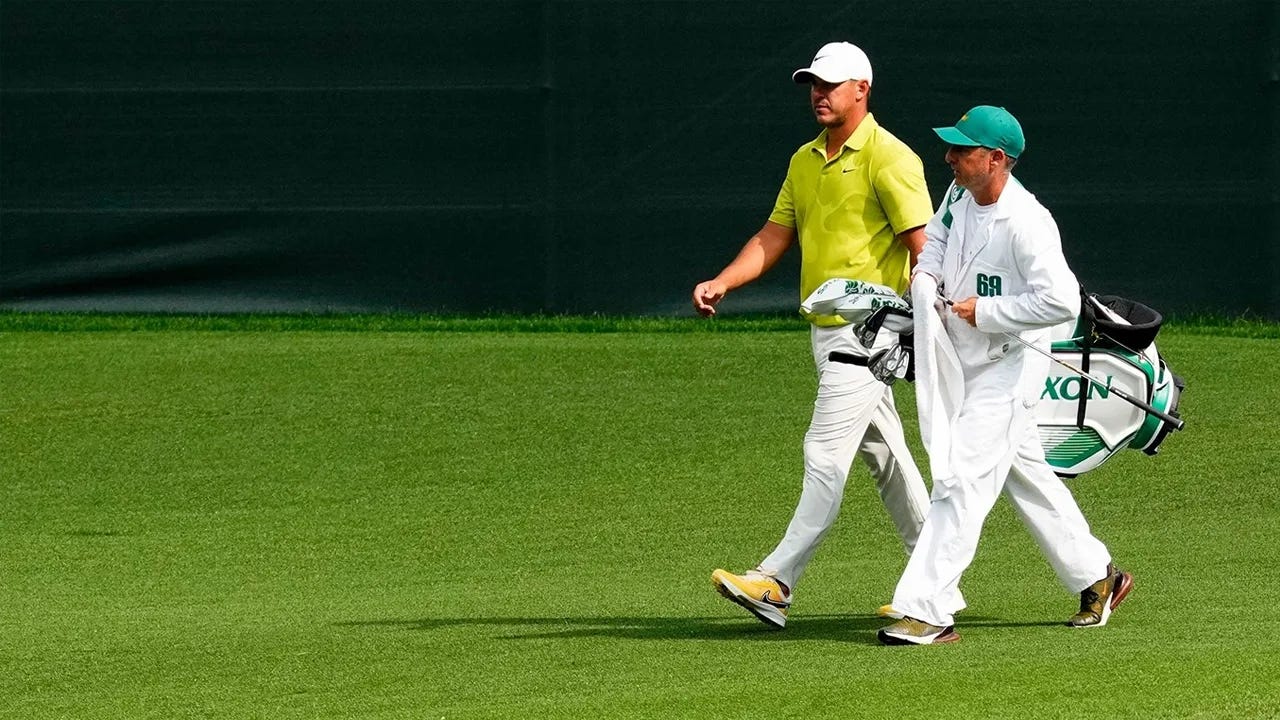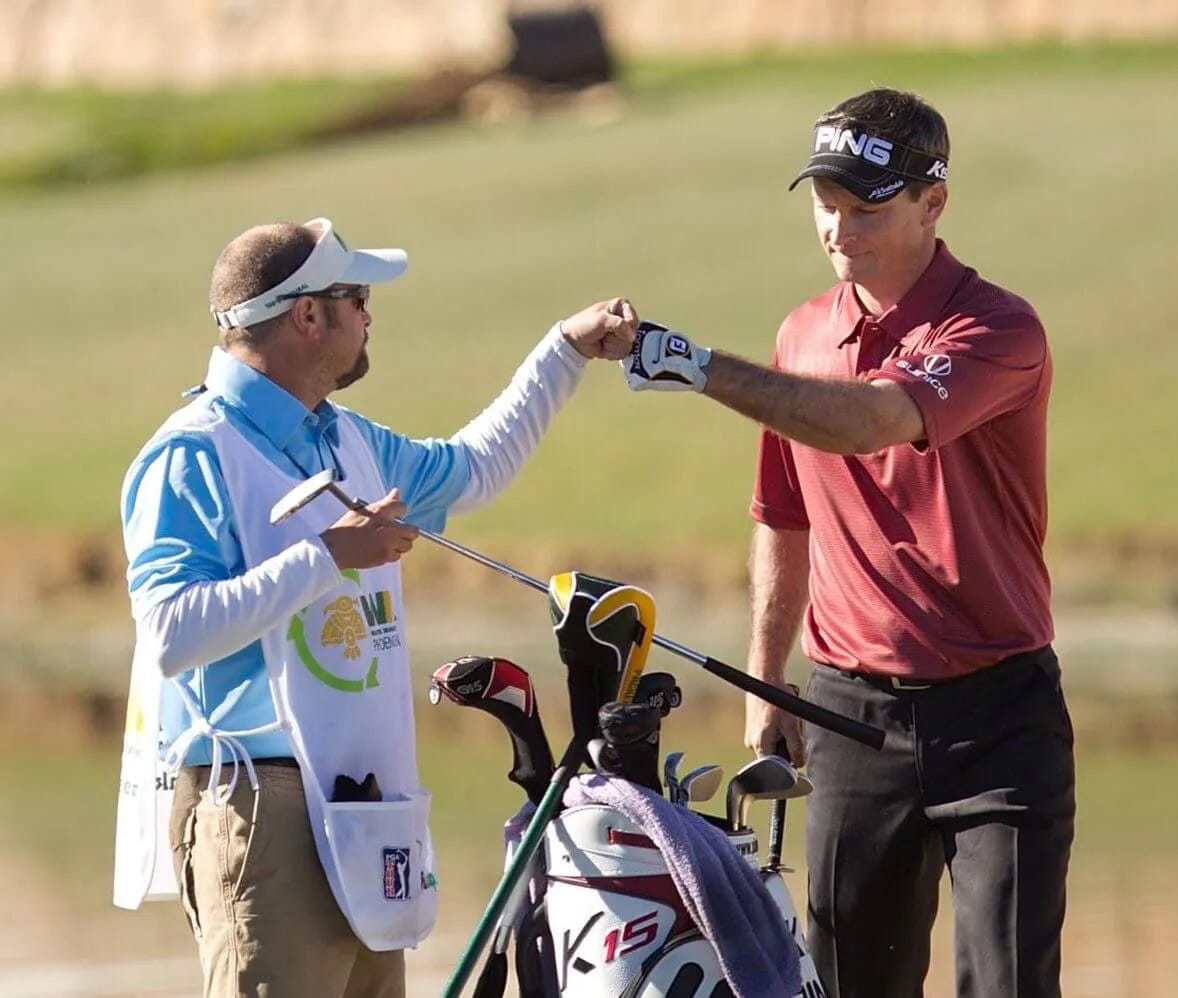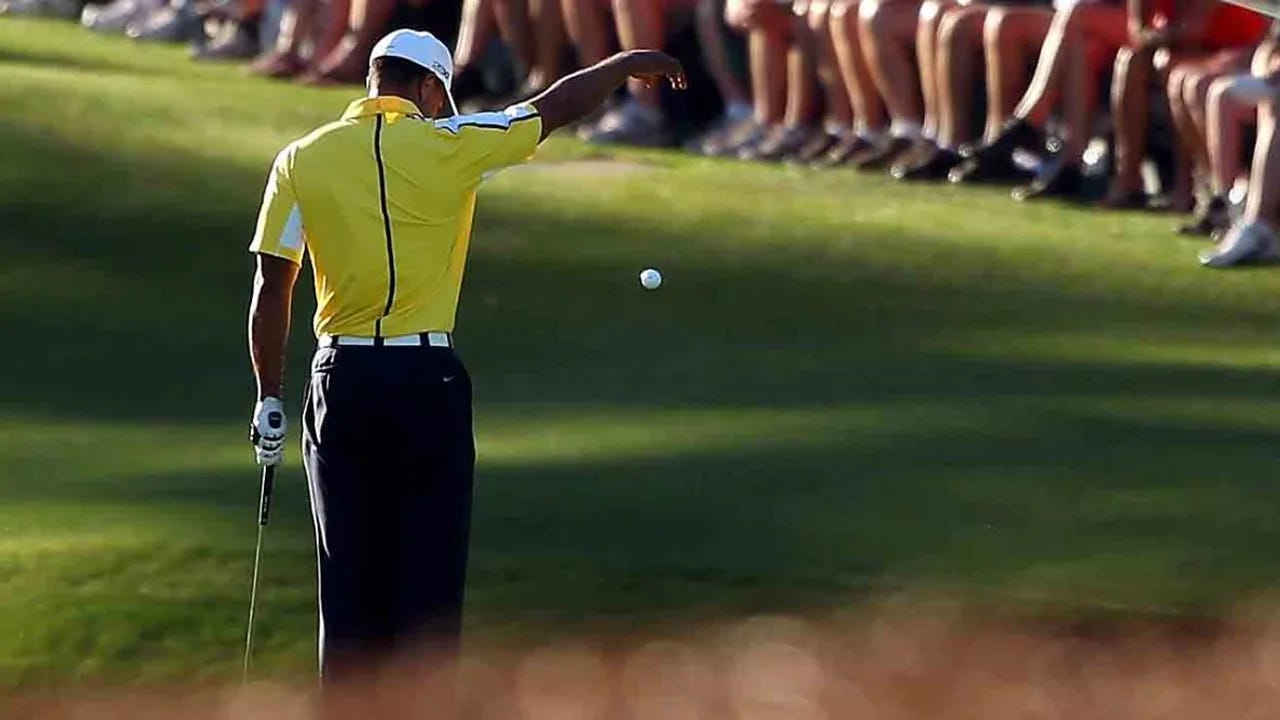Rules Are Rules … or Are They?
Masters officials dropped the ball by not assessing a penalty after an exchange between the caddies for Brooks Koepka and Gary Woodland
AUGUSTA, Ga.—Let’s be real people. It is what it is, and the clip is the clip.
Two veteran players, Brooks Koepka, 32, and Gary Woodland, 38, are in the par-5 15th fairway in the first round of the Masters. So are their longtime caddies, Ricky Elliott for Koepka and Brennan Little for Woodland.
Koepka smashes a mile-high drive off the tee with a baby fade that goes 310 yards, leaving him 231 to the hole.
Now driving, Gary Woodland. G-Dub, as “Brooksie” (Tiger is owed a royalty) calls him. Two U.S. Open winners. Two ballplayers. Two grown no-nonsense men in the thickest part of their careers.
G-Dub hits his tee shot on the exact same line as (Tiger gets another royalty here) Brooksie but about 15 yards longer. Woodland has about 215 into a green protected by a murky moat that eats golf balls.
So, four members (in a manner of speaking) of the 2019 U.S. Presidents Cup team enjoying the view from the middle of the 15th fairway. Tiger Woods captained that team, at Royal Melbourne in Australia. Probably the best Presidents Cup ever, and the Americans won. Two golf balls in the middle of the fairway.
Everybody is going (as they say in the trade) good. Koepka is 4 under for the day and Woodland is 2 under.
[adsanity align='alignnone' id=16429]
It’s Thursday. Nobody has turned up the heat yet. Yes, Koepka has gone LIV and Woodland has not, but with those two that’s never going to be a dividing line, not in terms of how they get along.
The point is, it’s a very comfortable pairing. It’s easy.
The third in the group is Danny Willett, the 2016 Masters champion, a bloke if ever there was one. He fits right in, too. Willett’s tee shot on 15 was a shove job, short and right. He’s going to have to lay up, and does. So he’s not part of this comfy tea party in the middle of the 15th fairway, a moment on the course, for some reason, where you can’t really feel the presence of the fans or TV or anything. Where they were, it’s almost like you’re on the top of a crest. It’s oddly isolated, even if the whole golf world is watching.
What’s your point?
State of mind, state of mind, state of mind.
Playing first, Koepka smashes a mid-iron that goes a little too far, about 25 feet beyond the hole. It is humid and warm and the ball is going far. Modest raindrops are starting to fall, but not hard enough for anyone to go for the umbrella or the rain jacket. Not at all needed. You want to feel as loose as you can.
Wee bit long.
So now it is Woodland’s turn. And he, of course, would want to know what Koepka had hit there, because they have similar games, and Koepka’s second shot was almost a full club too much.
As Woodland steps toward his ball, the two caddies cross paths, like cars on a country lane, and Elliott (Koepka’s guy) says or mouths a four-letter word to Little (Woodland’s): Five.
It’s right there on the video. It’s not Nice shot. It’s not balls are flying. It’s five.
Actually you did, it’s just that those involved lied. I wish you at least would be truthful. pic.twitter.com/dJNiIQ6Fmv
— John Ziegler (@Zigmanfreud) April 7, 2023
Enter the Rules of Golf.
It’s a slender book that governs all this action, this week and every week, on every elite tour. The rules are a study in precision, and each one is there for a purpose.
Competing players cannot share information with one another. Neither can their caddies. It’s basic. It’s an individual game. Reading the wind or the lie, calculating the yardage, deciding on one club over another are all essential parts of the game.
A player is allowed to peer into another player’s bag (without touching anything) to see what club is being played. That is completely, totally appropriate—you’re getting the information for yourself. But you can’t ask. And you can’t offer. That violates the spirit of the game at its essence.
It’s not complicated and it makes sense. Rule 10.2:
Purpose of Rule:
A fundamental challenge for the player is deciding the strategy and tactics for his or her play. So there are limits to the advice and other help the player may get during a round.
a. Advice
During a round, a player must not:
Give advice to anyone in the competition who is playing on the course,
Touch another player’s equipment to learn information that would be advice if given by or asked of the other player (such as touching the other player’s clubs or bag to see what club is being used).
Koepka’s caddie gave Woodland’s caddie advice, the information about the shot Koepka had just played, the club Koepka had just hit slightly too far.
The rulebook tries to create a level playing field. You can’t have a situation where one player has access to improperly received information and another doesn’t. It would be golf’s equivalent of insider information. On a far more extreme level, can you imagine competing players reading putts for one another?
It doesn’t matter that Little didn’t ask for the information. It doesn’t matter whether Woodland used the information. But he had to be between a hard 6 and a take-something-off-it 5, based on what he had seen Koepka just do.
If you want to enforce the rulebook, Koepka should have received a two-shot penalty, for Elliott having shared proprietary information.
By the way, there was once an era of professional golf that was much more rough-and-tumble, where misinformation might have been offered in that situation. This sensible rule protects against that possibility as well.
There are numerous stories in the lore of the pro game, most commonly involving Sam Snead, by which the player, annoyed by how much another player is gleaning from him, willfully takes way too much club, hits the shot with his grandmother’s swing, and then watches and laughs as the opponent flies the green when he plays his shot with the same club.
In 2007, during the second round of the Honda Classic, Mark Wilson’s caddie gave advice to a competing player, telling Camilo Villegas what club Wilson had hit on the par-3 5th. Wilson called in a rules official on the 6th tee and was given a two-shot penalty. After 72 holes, Wilson was in a tie for first with three others, including Villegas. Wilson won the event, his first Tour victory, and nearly $1 million.
You might as well praise a man for not robbing a bank.
The only system that works is for everybody to play by the letter of the law all the time.
When the group came in, Augusta National rules officials asked Woodland and Koepka and their caddies to tell them what happened. The green jackets had seen the tape. The tape was clear.
“Following the completion of Brooks Koepka’s round, the Committee questioned his caddie and others in the group about a possible incident on No. 15,” Jim Hyler, the tournament’s competition chairman said in a statement late on Thursday. “All involved were adamant that no advice was given or requested. Consequently, the committee determined that there was no breach of the rules.”
It begs the question: Why was Elliott mouthing or saying the word five when he and Little crossed paths in the middle of the 15th fairway? If that information is not advice, then what is?
What would Wilson have done in this situation?
In an interview after the round, Koepka said, “We looked at it when we got back in. They had no idea what we were hitting. They didn’t even know because—I know that for a fact, because G-Dub asked me what we hit walking off the 15th [green].”
You can do that, by the way. You can discuss shots and how you played them after they are played.
The rules officials could have enforced a rule. It would have caused an uproar in the short term and been good for the game in the long run. It’s best, of course, when the player calls a penalty on himself, as Wilson did. It might not seem, quote, fair that Koepka’s first-round 65 would have turned into a 67 had he done what Wilson had done. But it would have been the highest standard of fair. He would have put the rulebook first.
As everybody in golf knows, there is a jagged rift between the PGA Tour and LIV Golf. Human nature being what it is, it is easy to imagine Augusta officials being reluctant to impose a penalty on a high-profile LIV player, for fear of the fallout. There’s no way to know. The Masters does have precedent for taking a no-harm, no-foul position when adjudicating rules issues.
Officials could have disqualified Tiger Woods for signing an incorrect scorecard after taking an improper drop on 15 during the second round of the 2013 Masters. They didn’t.
They could have disqualified Rory McIlroy in the 2009 Masters, after he left a greenside bunker shot on 18 on Friday in the bunker and kicked or smoothed the sand with his ball still in it. (Testing the sand.) They didn’t.
They could have disqualified Dow Finsterwald for practice putting on a green at the 1960 Masters. They didn’t.
But we all know what happened to Roberto De Vincenzo at the ’68 Masters. He holed out on Sunday night. It looked like he and Bob Goalby were going to a playoff. But De Vincenzo, in his haste, signed an incorrect scorecard and, per the rules then, had to accept the higher score for which he had signed, the one that left him one shot out of the playoff. The card he signed showed him making a 4 on 17. He had made a 3. And that made all the difference.
Woods could have disqualified himself in 2013. He never even considered it. In the decade since then, something has changed in professional golf. The rulebook seems less sacred than it once was. At the 2013 Masters, a 14-year-old amateur from China named Guan Tianlang was given a one-stroke penalty for slow play. He was playing in his first Masters. He spoke little English. There were a lot of extenuating circumstances.
But he got the one-shot penalty under the most basic logic: A rule is a rule.
Michael Bamberger welcomes your comments at Bamberger@firepitcollective.com





